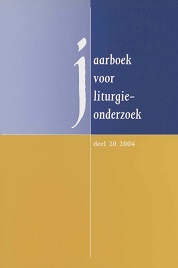Bronnen van liturgiehervorming tussen oorsprong en traditie
Abstract
This article deals with the question as to how liturgical scholars, both Roman Catholic and Protestant, have studied and interpreted liturgical traditions of the past. What attitudes did they take towards the development of these traditions? Which role played foundational periods in their construction of the past? To understand the position of the various scholars, use has been made of the concept of cultural memory as it has been developed by Jan Assmann. Essential to this concept is the distinction between the ‘communicative memory’, which relates to the recent past, and the ‘cultural memory’, which reaches back much farther in the past and pertains to ‘foundational periods’ surrounded by an era of sacredness. The periods to which both types of collective memory refer are separated by a floating gap, a period of ‘dark Middle Ages’. While studying the positions of various scholars from this perspective, four categories were distinguished: the traditionalists, the neo-traditionalists, the reformers and the proponents of a strongly inductive liturgy (or inductive rituals). The approaches to the history of liturgy adopted by the various categories turn out to be closely related to and influenced by ideas about the desirability of liturgical reform. Traditionalists and neo-traditionalists tend to emphasize historical continuity, which fits in with the idea that a liturgical reform would mean a rupture with the tradition of the past. Reformers are inclined to appeal to certain (foundational) periods of the past, to support their reformist ideas and these foundational periods are, as a rule, farther removed from the present as the reforms advocated are more radical. Whereas the principal temptation of scholars belonging to the first category consists in overemphasizing historical continuity, the reformists constantly run the risk of idealizing their own foundational period, while wrongly depicting the period of the ‘Middle Ages’ in exclusively dark colors. This is meant to deny neither the relevance of the study of liturgy for historical science nor that of historical studies conducted by liturgical scholars for the study of history. On the one hand, a certain degree of bias is unavoidable in historical research (liturgical historians should not be blamed for it more than other historians). On the other hand, it becomes clear from recent studies about inductive types of rituals that no (elaborate) rituals come into existence without a (biased) appeal to existing ritual traditions, Christian or otherwise.


